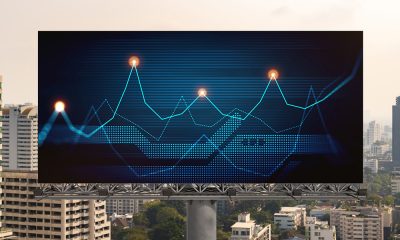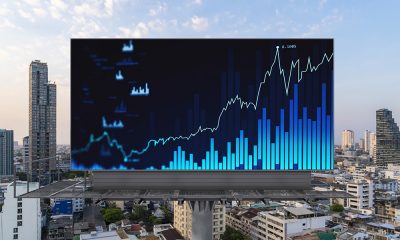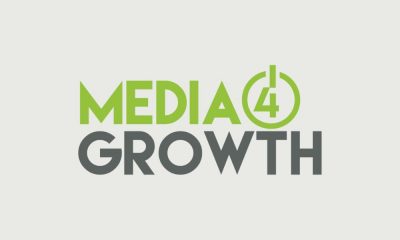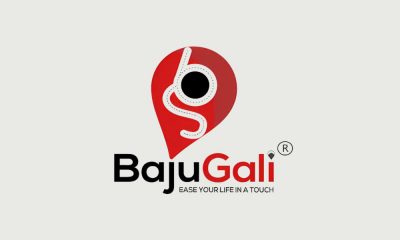Media Planning & Buying
‘DOOH cut out for great storytelling’
Jayesh Yagnik, CEO, MOMS Outdoor Media Solutions says that DOOH brings advertising to life, but these are still early days for this medium as DOOH media assets are still largely available only in the major markets.
 The DOOH media growth will complement the traditional OOH media business, providing clients with greater options, says Jayesh Yagnik, CEO, MOMS Outdoor Media Solutions, even as points out that DOOH growth in India is at a nascent stage. Edited excerpts of his viewpoints on the different dimensions of DOOH
The DOOH media growth will complement the traditional OOH media business, providing clients with greater options, says Jayesh Yagnik, CEO, MOMS Outdoor Media Solutions, even as points out that DOOH growth in India is at a nascent stage. Edited excerpts of his viewpoints on the different dimensions of DOOH
DOOH trends
“DOOH is definitely gaining momentum. It is pretty well established in international markets and is moving in the right direction in India. It started with places with high dwell time such as airports and malls and it worked very well there, and now it’s emerging as a roadside asset as well. DOOH is working well because it provides flexibility – you can customise, you can have creatives as you like, it is interactive, and you can even use storytelling as a way of advertising using DOOH. For example, on a linear path with numerous digital assets such as the Western Express Highway (WEH) in Mumbai, you can easily weave stories around the product to make it more appealing and captive. It essentially brings static advertising to life, it definitely has an impact and overall clients are happy with it.”
“When talking about the industry, the OOH inventories are growing and media owners are seeing better ROI, and as an agency it helps with our billing as well. However, the DOOH penetration is still metro-centric as majority of the assets are present in Tier-1 cities. Of all investments being made into the OOH sector, I think around 12-15% is being pumped into DOOH media, but that (investment percentage) is also high because the cost of media for digital assets is higher than traditional ones.”
“While DOOH is making outdoor advertising an attractive investment for brands, there are still a few advertisers who are hesitant to invest in the sector as it is a shared space at the end of the day. But what makes OOH stand out is that unlike other forms of advertising, it is non-intrusive. With other forms of media be it television, radio or print, the ads interrupt the experience of watching, listening or reading something. For example, when people watch IPL their intention is to watch the match and the ads that they subsequently view act as a tangent from their primary objective. Since OOH doesn’t invade the audience’s personal space, brands have a chance to put all their efforts into presenting a creative that is not only visually appealing, but also impactful so that people make an effort to look at the ad.”
Conventional large format vs. DOOH
“As of now, the penetration of DOOH is not much, so they definitely complement each other. Clients are not adamant about only using one format. It all depends on the areas they plan to advertise in, the assets available and which one will provide them with higher impressions. 80-85% of the investments are still poured into the traditional static assets.”
Media buying patterns
“When it comes to digital, ideally the media buying pattern should change which is through programmatic DOOH (pDOOH). I think once the inventories reach a certain level then pDOOH will become the norm as it provides brands with the freedom to customise and control their campaigns with an extensive dashboard. Once the penetration of media – not media investments – is high, the media buying pattern will change, but I don’t see it happening anytime soon.”
“I think at the moment, DOOH media accounts for a little over 4% of the entire market. Asian markets that are much smaller than ours, such as Malaysia or Indonesia, the penetration is 15-20% which is a strong number. For the Indian market to reach a similar level, it’ll definitely take some time as media costing in outdoor (advertising) is very different and varies from cities across the country. And until the media inventory doesn’t grow, buying media through pDOOH will be slightly difficult.”
On impressions-driven media
“Of course. It has already started and we at Madison provide our clients with gross impressions before the campaign even begins. And it is not just campaign-based, with the tools we use, we can get data on impressions for specific hoardings, areas, etc. As a result, we provide our clients with an Impression Gathering Plan (IGP), where we detail out the impressions they can expect from a certain campaign and the actual number of impressions delivered. We also conduct an analysis midway through a campaign to assess the impressions delivered and if we find that our targets are not being met, we troubleshoot the situation for our client, for example, providing them with additional sites across various locations to reach more eyeballs.”
-

 Campaigns
CampaignsBlinkit turns India’s shopping data into year-end OOH humour
-

 Campaigns
CampaignsSubway delivers sensory feast in London with “Scratch-and-Sniff” OOH billboard
-

 Brand Insights
Brand Insights‘More organized & standardized OOH ecosystem across cities needed’
-

 DDX Asia
DDX AsiaNewtech Video Systems to highlight value-added LED solutions at DDX Asia 2026




















